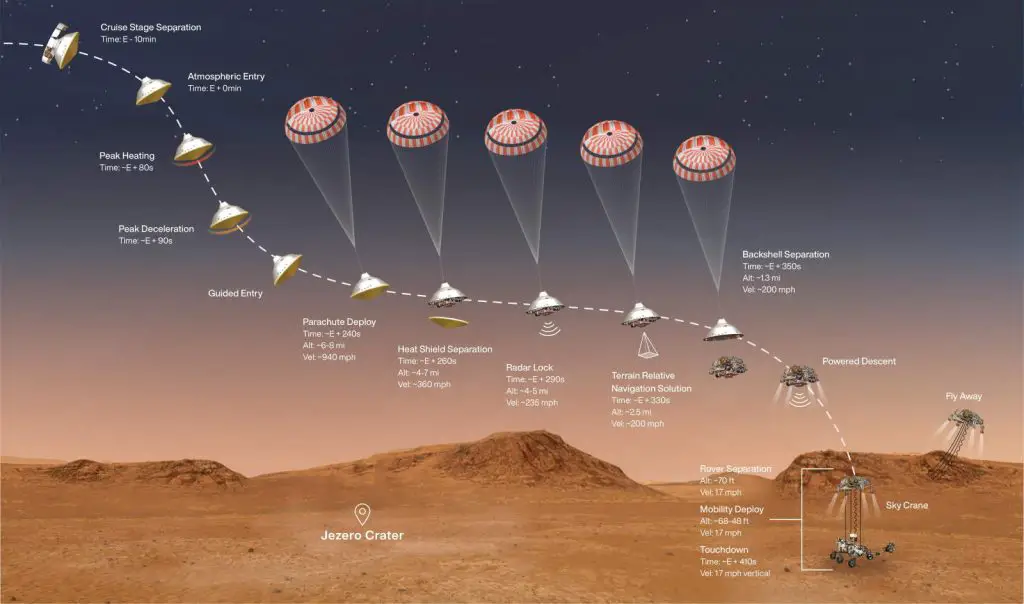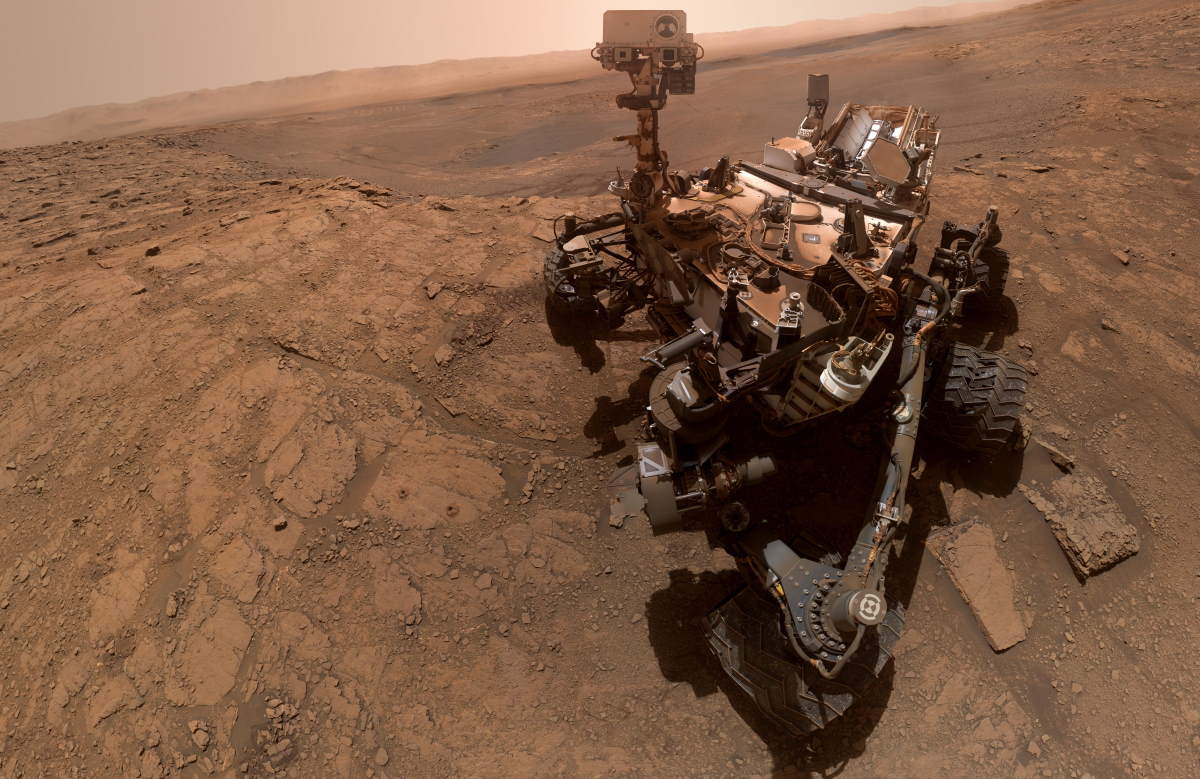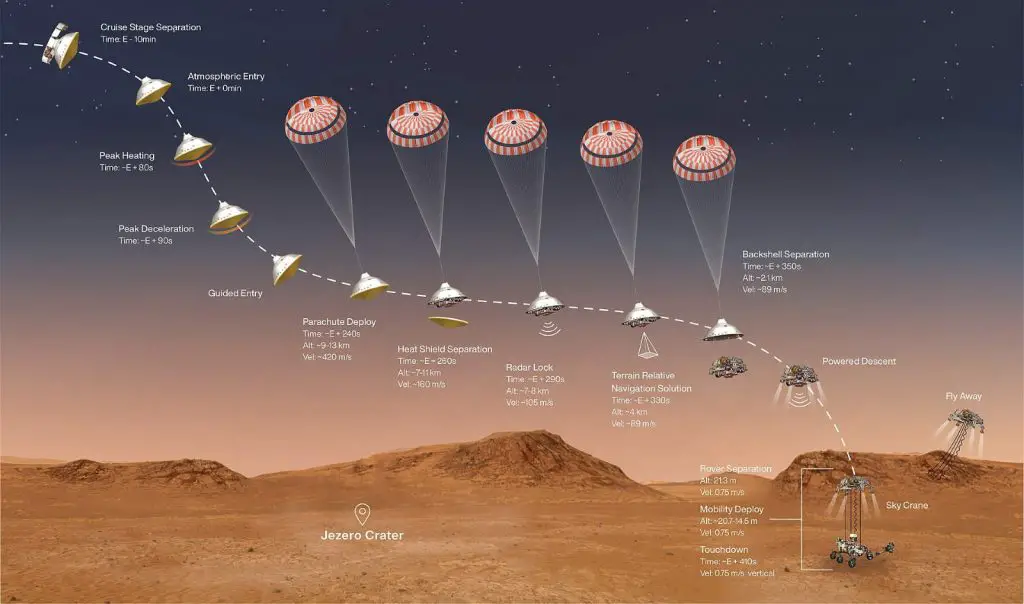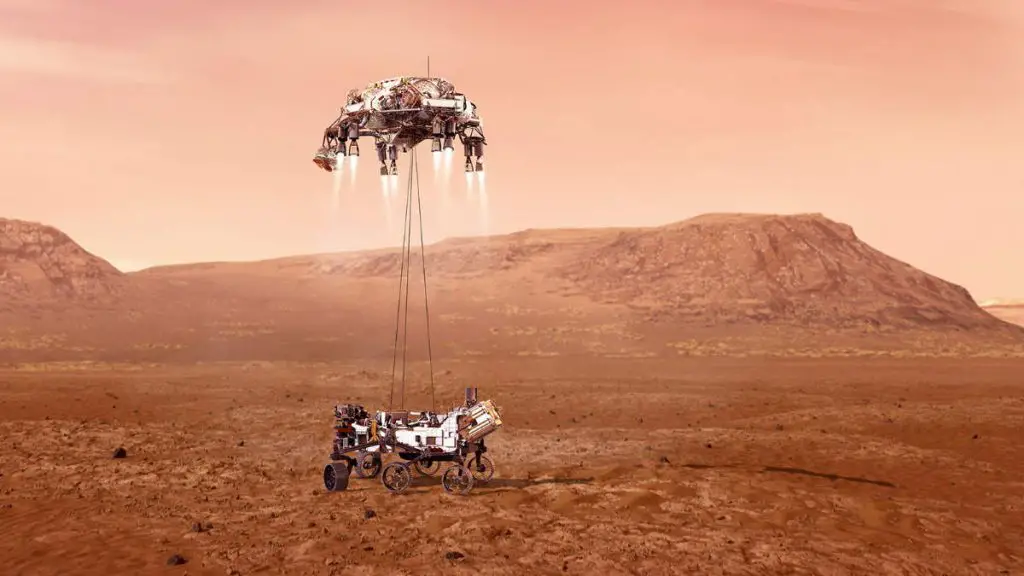Space lovers around the world are holding their breath for the landing of NASA’s Perseverance Rover on Mars on February 18th. After a 470.73 million kilometer (292.5 million miles) journey from Earth to Mars, Perseverance will join its fellow rovers Sojourner, Spirit, Opportunity, and Curiosity on Mars, and be part of a massive scientific endeavor to find signs of ancient life on the Martian surface.
If everything goes according to plan, Perseverance will perform the first-ever autonomous guided landing on Mars. Over the course of seven nail-biting minutes, the spacecraft will drop down on the Martian surface after a complicated landing procedure.
As the landing date looms closer, scientists and engineers are holding their breath for the precarious landing. Since Earth is so far away from Mars, the landing had to be programmed beforehand. At the time of the landing, all scientists can do is watch and see if it was successful.
Perseverance is equipped with state-of-the-art cameras, microphones (a first! For the first time we’ll be able to hear the sounds of entry and rover’s journey on the Martian surface), and navigation equipment. Weighing in at more than a metric ton, the landing needs to be pulled off to a T, or else the mission is over before it even begins.
The landing zone for the rover is a 45-kilometer wide crater called the Jezero Crater-chosen for its proximity to an ancient riverbed that scientists believe could hold evidence of life. But it’s not the best landing spot for the little rover.
Cliffs, boulders, and smaller impact craters make the area a dangerous landing zone for the rover. To make things more difficult, the rover will have to perform all of its own course corrections due to the signal delay from Mars to Earth.
After entering the Martian atmosphere at 19,300 kilometers per hour (11,992 mph), it will release a parachute to slow it down. Once it’s traveling at 240 kilometers per hour (149 mph, which is about the same as a skydiver falling on Earth), it will fire thrusters to slow its descent even further. Then, 4 kilometers (2.5 miles) from the surface, the spacecraft will lower the rover to the rocky surface via strong cables that are optimized for strength.
Since this rover is more than twice the weight of its predecessors, the cables, landing system, and parachute all need to work together perfectly to pull this off. Sounds easy enough, right?
You can watch live coverage of the Perseverance rover landing on NASA’s website on Feb 18. You won’t want to miss it.
Perseverance Rover’s Entry, Descent and Landing Profile

- Perseverance Rover’s Historic Mars Landing will be a Huge Scientific Leap - February 17, 2021
- Can Geothermal Energy Save Us From Climate Change? - January 8, 2021
- Can DNA Solve The World’s Data Storage Problem? - November 6, 2020



